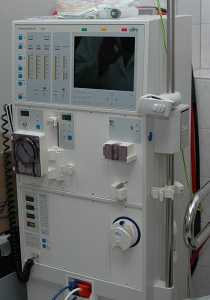01 Feb Majority of Dialysis Patients Unemployed
MedicalResearch.com Interview with:
Dr. Kevin F. Erickson MD, MS
Section of Nephrology and Selzman Institute for Kidney Health
Baylor College of Medicine
Houston, TX
MedicalResearch.com: What is the background for this study?
Response: An amendment to the Social Security Act passed in 1972 made it so nearly every person who develops end-stage renal disease – or ESRD – in the U.S. becomes eligible for Medicare, regardless of their age. At the time the law was passed, the bill’s supporters argued that access to life-sustaining dialysis therapy would enable patients to continue being productive members of society through work and activities at home. While the law has succeeded in providing access to dialysis therapy for many patients who would have otherwise died from kidney failure, it has been less successful at helping patients to continue working. The rate of employment among patients with ESRD who are receiving dialysis in the U.S. is low and has continued to decrease over time, despite both financial benefits from employment and evidence suggesting that patients who are employed experience improved quality of life and sense of wellbeing.
We used a national ESRD registry to examine trends in employment between 1996 and 2013 among patients starting dialysis in the U.S. and in the six months before ESRD. Our goal was to determine whether difficulties that patients face when trying to work begin even before they develop ESRD.
MedicalResearch.com: What are the main findings?
Response: We found that employment among patients aged 18 to 54 starting dialysis was low throughout the study period, at 23 to 24 percent. Also, 38 percent of patients who were employed six months prior to being diagnosed with kidney failure stopped working by the time they initiated dialysis. On a slightly more positive note, after adjusting for patient characteristics and local unemployment rates in the general population, the probability of employment in dialysis patients increased slightly over time. Black and Hispanic patients were less likely to be employed than other patients starting dialysis, but this gap narrowed during the study period.
MedicalResearch.com: What should readers take away from your report?
Response: Many patients with advanced kidney disease face significant health challenges before they require dialysis therapy, including frequent hospitalizations, fatigue, and cardiovascular disease. We found that more than 75% of patients were not working by the time they started dialysis, and about a third of those who were employed six months prior to starting dialysis had stopped working by the time they progressed to end-stage kidney failure. This suggests that patients with advanced kidney disease face significant barriers to employment even before they even begin dialysis. In addition to helping patients with ESRD, efforts to help patients find work should focus on those with advanced kidney disease who have not yet progressed to ESRD.
MedicalResearch.com: What recommendations do you have for future research as a result of this work?
Response: It will be important for future research to identify specific barriers that patients face when trying to work as they transition to ESRD and to develop effective interventions to help patients with advanced kidney disease who want to remain employed.
No disclosures
Kevin F. Erickson, Bo Zhao, Vivian Ho, and Wolfgang C. Winkelmayer
Employment among Patients Starting Dialysis in the United States
CJASN CJN.06470617; published ahead of print January 18, 2018, doi:10.2215/CJN.06470617
Citations:
[wysija_form id=”3″]
The information on MedicalResearch.com is provided for educational purposes only, and is in no way intended to diagnose, cure, or treat any medical or other condition. Always seek the advice of your physician or other qualified health and ask your doctor any questions you may have regarding a medical condition. In addition to all other limitations and disclaimers in this agreement, service provider and its third party providers disclaim any liability or loss in connection with the content provided on this website.
Last Updated on February 1, 2018 by Marie Benz MD FAAD

